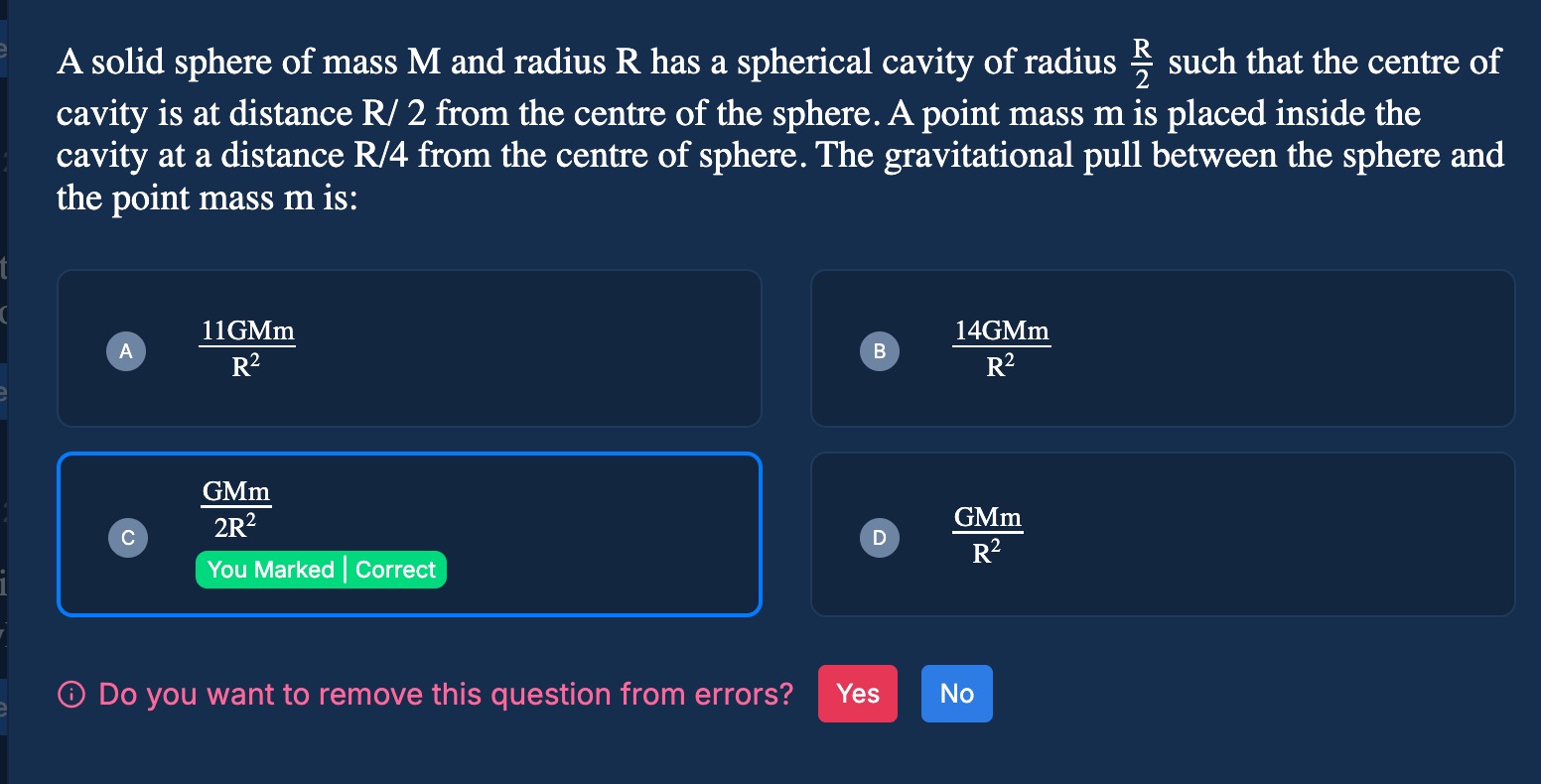Question
Question: A solid sphere of mass M and radius R has a spherical cavity of radius $\frac{R}{2}$ such that the c...
A solid sphere of mass M and radius R has a spherical cavity of radius 2R such that the centre of cavity is at distance R/2 from the centre of the sphere. A point mass m is placed inside the cavity at a distance R/4 from the centre of sphere. The gravitational pull between the sphere and the point mass m is:

fraction with numerator 11GMm and denominator R squared
fraction with numerator 14GMm and denominator R squared
fraction with numerator GMm and denominator 2R squared
fraction with numerator GMm and denominator R squared
2R2GMm
Solution
Solution Explanation:
Represent the sphere with a cavity as a superposition of a full sphere (mass M) and a "negative mass" cavity (mass M/8). For a uniform sphere, the gravitational field inside a sphere at a distance r from the center is
g=R3GMr.
-
Full sphere contribution:
For the point mass at distance r1=4R from the center,
g1=R3GM⋅4R=4R2GM (directed toward the center). -
Cavity contribution:
The cavity (negative mass −8M) is centered at 2R from the center. The distance from the cavity’s center to the point mass is
r2=4R−2R=4R.
Inside a uniform sphere, the field is
g=a3G(mass)r, with a=2R.
Thus, for the cavity,
g2=(R/2)3G(M/8)⋅4R=R3/8G(M/8)⋅4R=4R2GM.
Because the mass is removed (negative), the effective field is reversed. Since the point mass lies between the center of the sphere and the cavity center, both contributions act in the same (inward) direction. -
Net gravitational field:
gnet=g1+g2=4R2GM+4R2GM=2R2GM. -
Gravitational Force on m:
F=mgnet=2R2GMm.
Answer:
2R2GMm (Option C)
